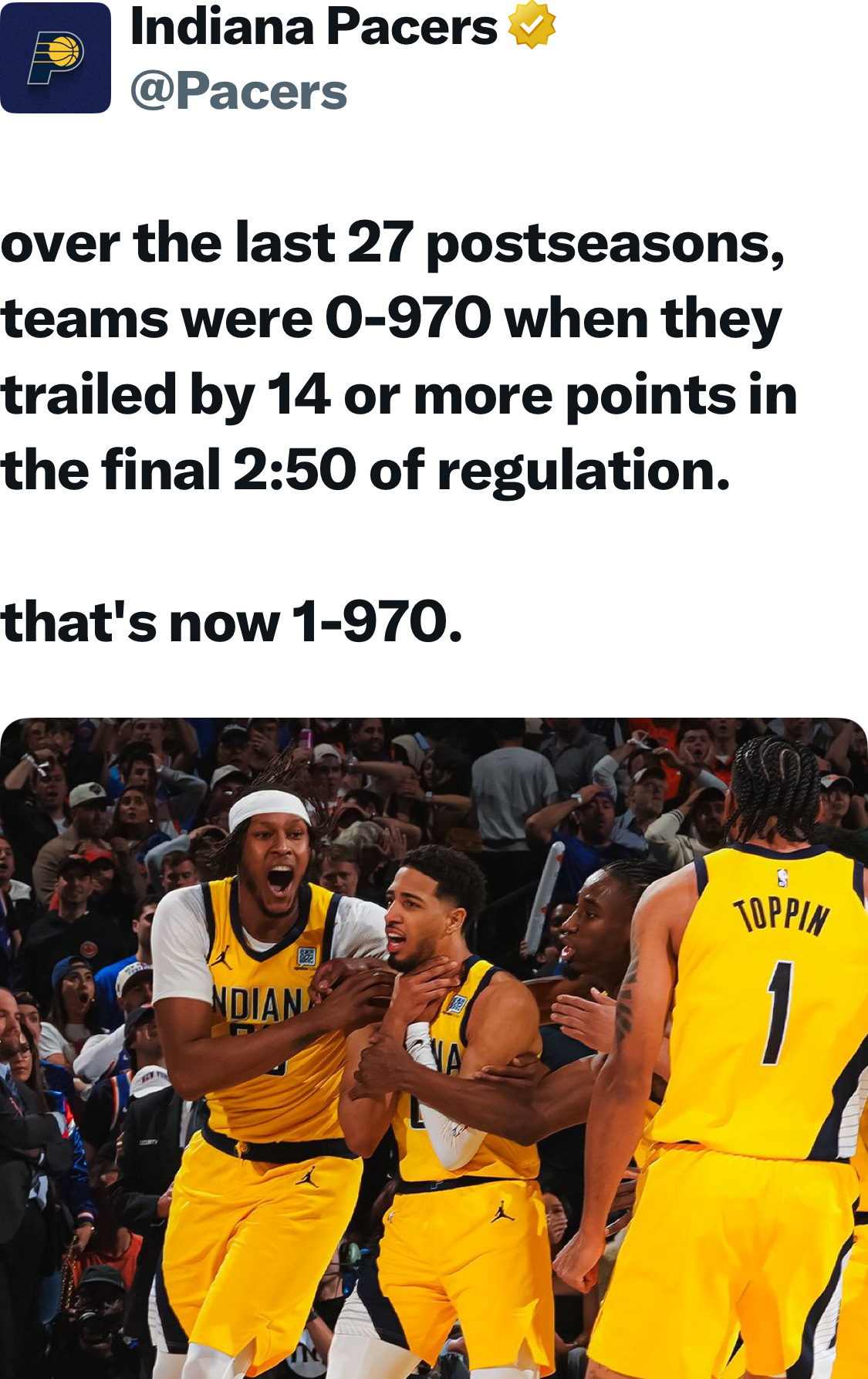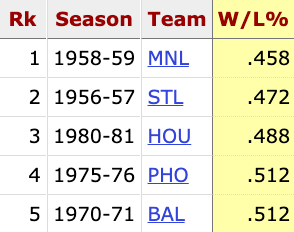What has happened to homecourt advantage in the NBA?
With an assist from our colleagues at Basketball Reference, we dive into the numbers that show just how much that supposed edge has been eroding for home teams leaguewide
The Oklahoma City Thunder won Game 1 of the Western Conference finals handily over visiting Minnesota.
That seemingly unremarkable sentence is notable because it meant that the home team had actually won seven games in a row in these wildly unpredictable NBA playoffs.
This spring? It's a statistical nugget that legitimately reads like a revelation … like a surprising turn in the modern NBA. Especially when the Indiana Pacers are routinely uncorking comebacks previously thought impossible by the standards of math and history in #thisleague.
The Pacers did it again Wednesday night, somehow wiping out a 14-point deficit at Madison Square Garden with less than three minutes to play in regulation to remind us, yet again, that homecourt advantage is simply not the advantage that it used to be in this era of deficit-erasing, bombs-away shooting from the 3-point line.
Research provided by my friends at Basketball Reference will help me illustrate that here.
As an NBA fan who truly came of age in the 1980s, I grew up believing that the home team was pretty much ordained to win at least 60% of the time. In the '80s alone, in fact, there were five seasons that the league's composite winning percentage for home teams was no lower than .654.
Yet that was truly yesteryear compared to the 2020s. This season marked the fourth time in the past five seasons that the composite winning percentage for home teams was way down in the .540s.
Down to .544 to be precise:
And the above four seasons in the .540s happen to rank as the four worst seasons for home teams in the league’s nearly 80-year history.
It's a specific trend that I've been tracking for some time and that's why I wasn't floored like many when the second round of these playoffs began and home teams suddenly couldn't win a game.
Road teams actually started out at a heady 12-6 in Round 2 until we witnessed what might rank as the real surprise: Home teams rallied to go 6-0 to close out the round.
If we rewind just a bit to the 2019-20 season, road teams enjoying that sort of playoff success would have been easy to explain. That, of course, was the Walt Disney World bubble season. All games were contested in the Disney village that the NBA invented to play out its season in the face of the COVID-19. Home teams and road teams were purely conceptual when all the games were contested in one place and traditional NBA plane travel went on hiatus.
This postseason, by contrast, road teams were routinely sending home crowds home unhappy through the first two rounds, going a robust 30-30 until home teams' recent recovery surge began to restore order. As the enclosed Stathead chart shows, that 30-30 launch had these playoffs looking like they might be the roughest on home teams since 1980-81. Road teams went a wild 27-26 in those playoffs, which also featured the 40-42 Houston Rockets — led by Moses Malone and coached by Del Harris — becoming one of only three teams in league history to reach the NBA Finals with a sub-.500 record.
Wondering about Game 7s specifically? The Thunder indeed throttled the Denver Nuggets in the only Game 7 we saw in Round 2, but home teams are just 6-9 in Game 7s from 2020-21 through this postseason.
Those intoxicated by tracking such nerdy trends, like me, are watching for something else in these playoffs.
The lower seed has won four of the 12 separate series already contested this spring. Six teams did so without homecourt advantage in last season's playoffs … after seven lower seeds won best-of-seven matchups in 2023.
The latter is the single-season record since the NBA adopted a 16-team playoff format starting with the 1983-84 campaign. Yet as my pal John Hollinger of The Athletic noted recently, we hadn't seen more than five lower seeds advance — before these past two postseasons — since 1994-95 delivered six of them. Those aforementioned Rockets were largely responsible that spring when, as the West's No. 6 seeds, they did it four times themselves en route to a second successive championship.
PS — The Cavaliers went 34-7 at home in compiling a 64-18 record that earned them the East's No. 1 seed … and then went 0-3 at home against Indiana in the second round. Researcher extraordinaire pointed out last week that five of Cleveland's 10 losses at home this season, when you include the playoffs, were inflicted by Indiana. Only Oklahoma City, at 35-6, had a better home record during the regular season than Donovan Mitchell and Co.
PPS — Stat Keeks did unearth one significant specific problem that home teams had in the second round of this season's playoffs: Making shots from deep. Home teams shot just 33.2% on 3-pointers in Round 2 … which is the lowest success rate from deep that we've seen from home teams since the 2012-13 playoffs (also 33.2%).
PPPS — Fellow fans of losing themselves by going down statistical rabbit holes have to check out this tremendous page from the Basketball Reference team, which merely features every single NBA and ABA playoff series — EVER — in one place.










